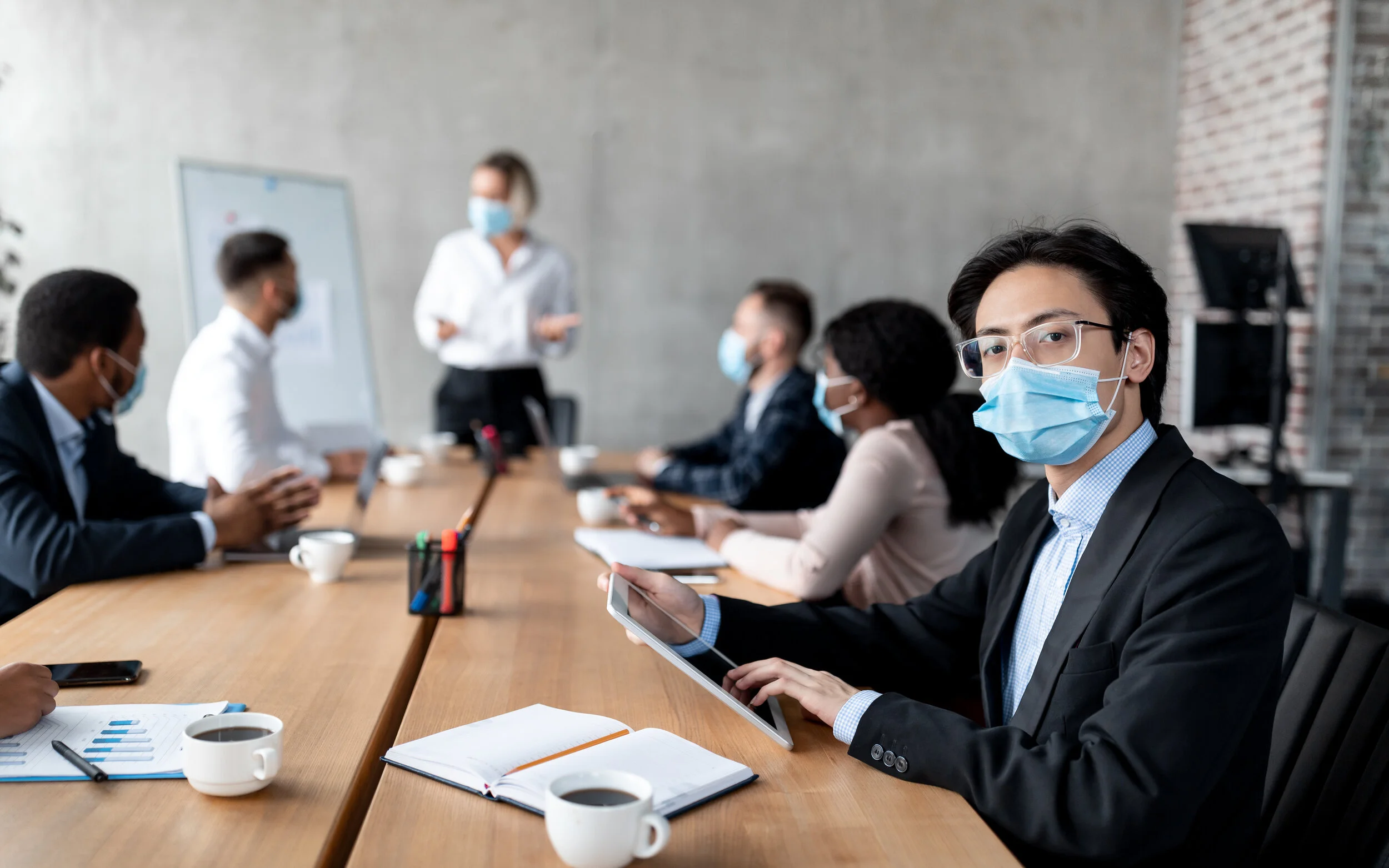Safety First – A Call to Action as we Return to Office
With the Biden administration’s announcement on vaccine and testing requirements for any employer with more than 100 employees, leaders find themselves in a unique position once again. We will need to help employees return to the office when some may feel “forced” into returning and feel resentful. Others may feel uncomfortable taking any risk, given the Delta variant. How do we as leaders use this opportunity to help heal the rifts that have plagued the Return to Office debates?
Our client, the CHRO of an American Fortune 500 company, has led by example over the course of the last 18 months. She has cared for her health, the health of her employees, and the health of her family. She lives in one of five states leading the country in runaway COVID infections. She has two children under the age of 12 who are not yet eligible for vaccines. Despite her precautionary measures, personally and professionally, her vaccinated father-in-law tested positive for COVID. No one knew he was contagious because he was asymptomatic. Her 9-year-old daughter also contracted the virus and was very sick, and then the CHRO ended up with a breakthrough case. How, even with vaccinations, should she keep her employees safe as they return to work?
Another client, a young father, recently returned to the office. Though his officemates were all vaccinated, for the same reasons as the CHRO, he continues to wear his mask to protect those at home who cannot get vaccinated. One of his senior partners teased him about wearing his mask in front of his team and his peers. He was left feeling like the “odd man out.” While unlikely the intended result, this is far from the safe, healthy environment which bolsters productive, engaged employees through a positive, inclusive culture.
According to the Associated Press, although more than 208 million Americans have had at least one dose of the vaccine, some 80 million are still unvaccinated. The U.S. is seeing 300% more new COVID-19 infections a day, about two-and-a-half times more hospitalizations (nearly twice the number of deaths compared to the same time last year.)
With the recent federal announcement, leaders of the corporate sector hold a unique responsibility to lead by example. We can do better. Vaccination requirements, mask mandates, and physical distancing in the office will communicate a message of safety to our employees. The safer our employees feel, the more productive they can be without worrying about themselves and their families.
As employers begin to bring employees back to work, even with the federal mandate, debates will continue around vaccination requirements; repercussions for vaccination refusal; incentivizing vaccination compliance; mask wearing; and feasibility of socially distanced office space. Breakthrough cases will still occur, and employees will still need to feel assured.
What should employers and leaders do?
As a leader, you must acknowledge your responsibility for ensuring the health and safety of your employees and a positive and inclusive culture. If your team doesn’t feel safe, a very basic human need, they will underperform or choose to not perform at all and leave.
As you set standards and create a safe and supportive environment where your employees can thrive, here are a few key factors to consider.
Adjust your workplace culture and expectations. Although federal vaccine mandates are in place, employees still need you to communicate your own company’s policies and expectations around safety protocols. This is also your opportunity to demonstrate the desired behaviors through your own actions. As vaccinations and routine testing become more accepted protocols, consider allowing remote work where role and type of work are relevant. Consider a hybrid return and allow employees to shape the “hybrid” terms within guardrails. This will help limit exposure for all. And, make sure you don’t inadvertently penalize those who take advantage of remote working by rewarding only those you see in the office.
Mask up. It’s not enough to follow local mandates. As we have seen, those states with the highest hospitalizations and highest cases are the same states that are not mandating masks or vaccinations.
Retrofit your office space to protect your employees. We know that physical distancing with proper ventilation greatly reduces risk, and with breakthrough cases like the one with our CHRO client mentioned earlier, employees spaced further apart will feel a stronger sense of physical safety and well-being.
Treat all employees with care and concern. Even when differences occur, extending empathy, now more than ever will matter. Recognize everyone is working through this crisis in their own way and deserve dignity and honor in how they are treated at work.
While required weekly testing may catch some cases, according to a recent Gartner[1] poll, some 70% of HR leaders reported that their employees are concerned about contracting Covid from unvaccinated colleagues. And since those who are vaccinated can still spread the virus, mask wearing along with social distancing are the most effective means of prevention. These steps will keep our employees safe.
Understandably, this may cause some current employees to vote with their feet. That is their right. It is, however, the right and responsibility of an employer to take prudent action to protect the majority, by creating a safe and healthy work environment where employees will thrive. Your employees, those who are anxious to do good work, will thank you.

